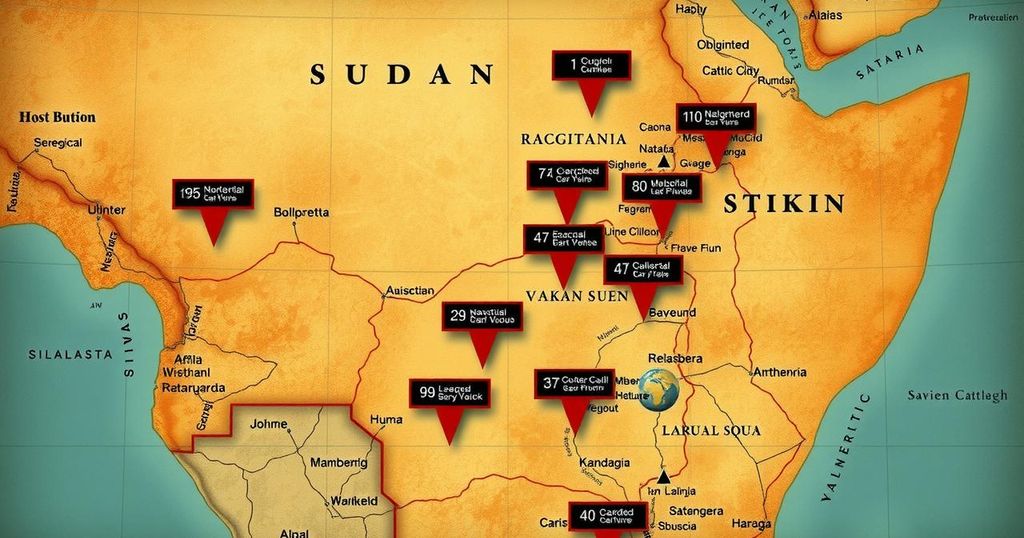An Overview of Sudan’s Political Instability and Conflict History

Sudan has a troubled history marked by civil wars, military coups, and ongoing instability. Significant events include the rise and fall of leaders, the ongoing conflict between the military and RSF, and humanitarian crises resulting from these conflicts. Recent developments indicate a worsening situation in the country.
Sudan has experienced prolonged turmoil marked by military coups, civil wars, and ongoing instability. Following a two-year conflict between the army and the paramilitary Rapid Support Forces (RSF), the Sudanese army recently declared full control over the Presidential Palace in Khartoum, signalling a significant development in their struggle against the RSF.
Sudan’s political history is punctuated by key events, beginning in 1985 with the ouster of President Jaafar Nimeiri after a popular uprising. A military commander briefly led the country, promising elections that resulted in a three-year civilian government in 1986.
In 1989, Army General Omar al-Bashir executed a coup, initiating three decades of his leadership, initially supported by Islamist officers and politician Hassan al-Turabi, who later opposed Bashir’s regime. By 1996, under U.S. pressure, the Sudanese government expelled Osama bin Laden, who had been residing in Sudan as a guest.
The United States targeted Sudan in 1998, launching missile strikes on the El Shifa pharmaceutical factory, which officials alleged was manufacturing chemical weapons, a claim Sudan denied. A notable humanitarian crisis arose in 2003 due to the Darfur conflict, resulting in over 300,000 fatalities and millions displaced, leading to genocide charges against Bashir by the International Criminal Court.
In 2005, a peace agreement ended decades of civil war between the northern government and southern rebels, culminating in South Sudan’s independence in 2011. The Sudanese populace in 2019 successfully ousted Bashir, leading to a tumultuous transition period marked by friction between military and civilian leaders.
The conflict reignited in April 2023 amidst protests against the military, with violence erupting between General Abdel Fattah al-Burhan’s army and General Mohamed Hamdan Dagalo’s RSF. By 2024, the ongoing conflict has resulted in a severe humanitarian crisis, with famine threatening several regions.
In summary, Sudan’s history is characterized by repeated cycles of civil strife, military coups, and humanitarian crises. The political landscape continues to shift, with recent developments indicating an escalation in conflict and a worsening humanitarian situation, underscoring the need for attention to Sudan’s plight.
Original Source: www.usnews.com








